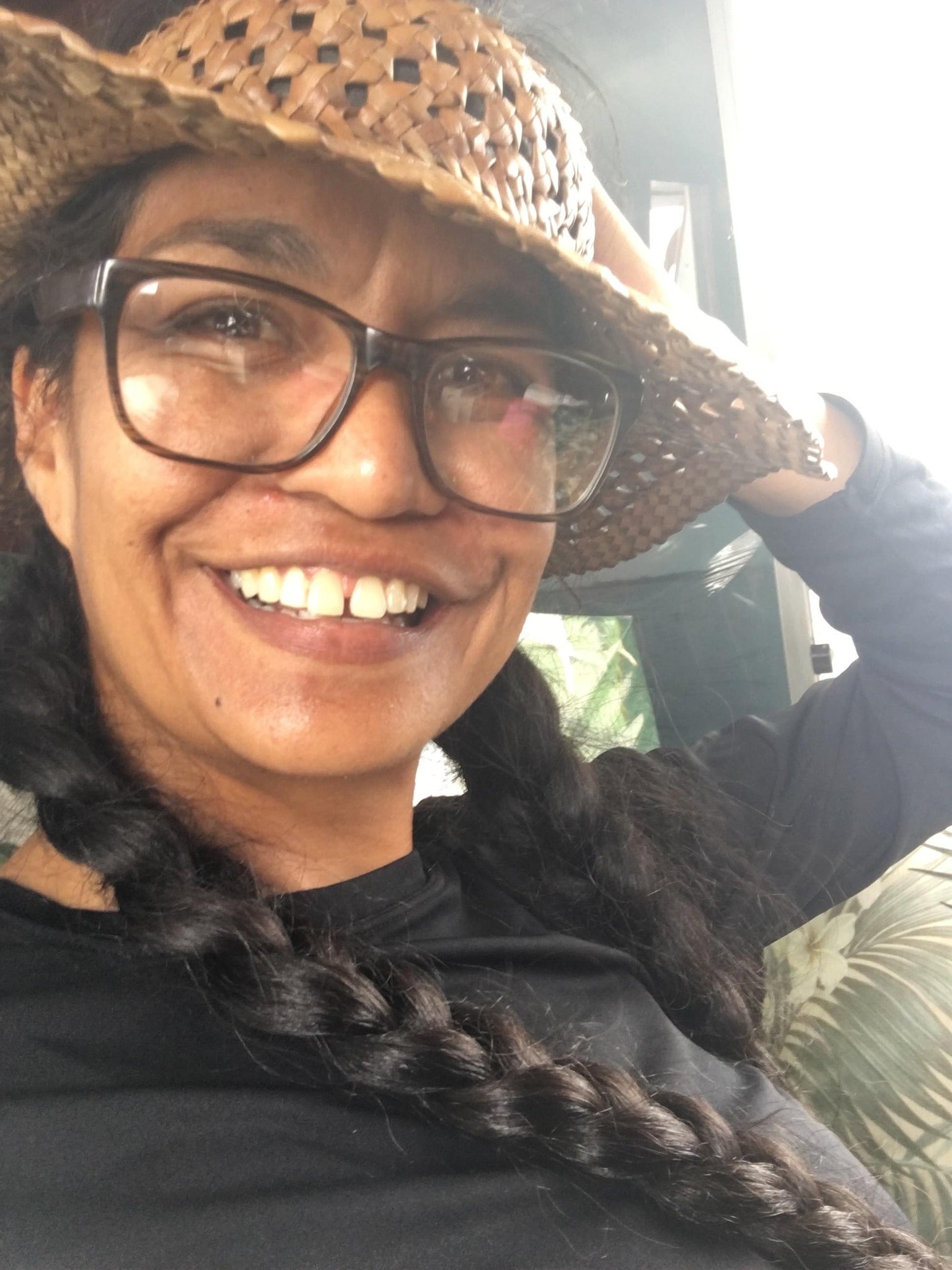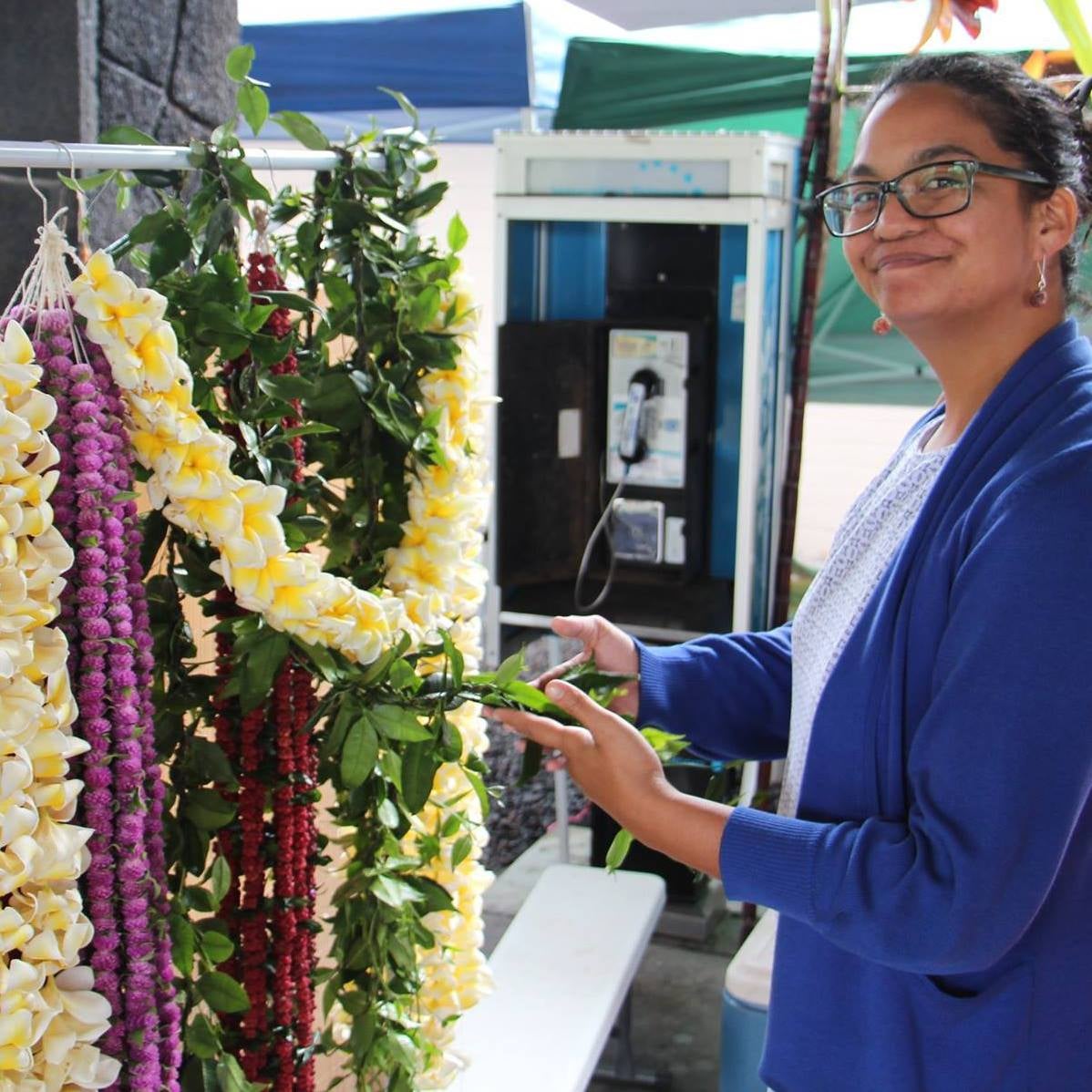Have you ever considered the forest a relative?
Imagine for a moment: the leaves, bark, seeds, flowers, roots and pollen are all family members.
There are some relatives that you are closer with than others and know more intimately. When something is off or wrong, you can tell immediately without words said. And, instinctively, you curate the space, scatter seeds, prune native species and remove invasive ones, because it's the right thing to do to help your own kin.
As an ethnobotanist, Katie Kamelamela, assistant professor in Arizona State University’s School of Ocean Futures, studies people and their relationships to nature.
Kamelamela, who was born and raised on Oʻahu, Hawaii, today chronicles Indigenous practices, analyzes how practices have evolved over time in the face of climate change, and brings together place- and practice-based community needs with policy.
ASU News spoke to Kamelamela about her Native knowledge work and how shifting awareness to our own relationship with landscapes can impact how we approach conservation.
Note: This interview has been edited lightly for clarity and brevity.

Katie Kamelamela
Question: Can you tell us about your research?
Answer: I'm formally trained as an ethnobotanist, which is the study of people and their relationships to plants. I do historical and contemporary analyses of forest gathering practices, culture and economics.
It’s known that Hawaii has gathering practices, ethnobotanical writing and oral histories that are recorded in books. Those practices are iterated into step-by-step processes, like how to make cordage, how to make a canoe and how to use different dyes. I look at all the things Hawaiians did historically and what are we doing today.
That relates to Indigenous practices because Indigenous practices are based on observations of the environment. My work mainly involves supporting community place-based and practice-based activities through advocacy.
Q: What does this work look like in practice?
A: I look at the history of the practice, place and tradition, and where those practices and traditions still live today. I go to those places and talk stories with people and understand how Indigenous practices have been updated due to changes in materials and resources, and how people are adapting to threats to native resources because of climate change.
For example, the thermocline is rising, which then threatens native birds, which people historically have used for things like feather capes. Right now it’s so critical to have a better understanding as many endemic species are disappearing.
What I understand through my research is the relationship that people have with these forests and landscapes. There's nothing to solve; it's about building awareness.
Q: What is the importance of this work?
A: This is important because it emboldens our social fabric. The things that Hawaii are known for — lei, hula dancers and flowers — are curations of culture, and not all those things come from our forest or our landscapes, but they're a reflection of how we view ourselves.
As you become familiar, those plants, those corals, those fish, those pigs are your family. Even when you're not there, if you go into that space you can understand if they've been there, when they've been there, how many have been there and what's going on.
That's what Indigenous practices are; it’s the kinship that you create not just with human beings. Indigenous people curate, remove invasive species, prune native species and more because they rely on these resources — spiritually, emotionally and economically.
Q: So, by having paternal or familiar care and concern for a place, naturally you’ll want to preserve it the way it has been for generations?
A: Yes, but it's not just preserving it for the sake of preserving it. It's because you actually eat that pig and eat those fish. If you eat that pig and eat those fish, you're not trying to eat them all. You're trying to make sure that you have pigs and fish and fruit for tomorrow.
The duration of the landscape isn't to be rid of resources but to utilize them. You could eat the pig, but you could also utilize a rooting hole to plant things. You're not just saving it to look at it, you're saving it because it's within you.

Kamelamela's research chronicles Indigenous practices, analyzes how practices have evolved over time in the face of climate change, and brings together place- and practice-based community needs with policy.
Q: How can a better awareness and understanding of Indigenous knowledge help us in conservation efforts in Western culture today?
A: The space between conservation as we know it today and Indigenous practices is kinship and relationship. It’s treating other beings with the same value as ourselves because we consume them. Not just food but spiritually, emotionally and as markers of life-cycle events. It’s the biggest gap that I see, but I don’t see that as unattainable for anyone.
People need to be open to the understanding that their environment impacts them. We know this; this is why we clean our houses. But it's a difference in the alignment of values.
Q: Looking ahead, what role do Indigenous practices play in shaping sustainable ocean management strategies that can benefit everyone?
A: (By) creating relationships. An example of a successful partnership between Indigenous community scientists and policymakers is the in the northwestern Hawaiian islands. There's also the Native Hawaiian advisory group and the Native Hawaiian Nomenclature Group that have helped to create scientific names of new findings related to Hawaiian genealogies.
As well as informing policy, Native groups are helping inform how permits are created, the cultural access for practitioners, and other things of that nature. Again, setting a precedent for relationship and protocol etiquette. These endeavors are new, so we need grace and kindness as we learn.
Q: What message do you hope to leave people interested in learning more about Indigenous knowledge and the future of conservation?
A: We’re all kin. We're all people, and we all want good things for ourselves and our family and the next generations. I think it's good to think about how we are aligning with that. Is it how we spend our money? Is it who we volunteer with? How are we connecting to the issues that we care about beyond letter writing? The only way to experience Indigenous practices is to go and practice with people who do Indigenous practices. And so if people are interested in that, they should seek out those experiences. If you don't go, you'll never know.
Top image: Katie Kamelamela walks through a Hawaiian coastal forest, where much of her research occurs. Photo courtesy Katie Kamelamela
More Environment and sustainability

2 ASU faculty elected as AAAS Fellows
Two outstanding Arizona State University faculty spanning the physical sciences, psychological sciences and science policy have been named Fellows of the American Association for the Advancement of…

Homes for songbirds: Protecting Lucy’s warblers in the urban desert
Each spring, tiny Lucy’s warblers, with their soft gray plumage and rusty crown, return to the Arizona desert, flitting through the mesquite branches in search of safe places to nest.But as urban…

Public education project brings new water recycling process to life
A new virtual reality project developed by an interdisciplinary team at Arizona State University has earned the 2025 WateReuse Award for Excellence in Outreach and Education. The national …


